Art & Exhibitions
The 6th Moscow Biennale Is Political But You’ll Have To Look Hard for The Art
How to curate a meaningful biennial on a shoestring budget?
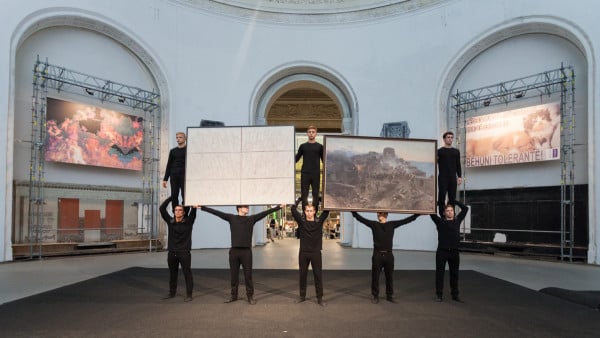
How to curate a meaningful biennial on a shoestring budget?

Hili Perlson


The Space Pavilion at VDNKh, the site of the 6th Moscow Biennale, 2015.
Photo: Courtesy 6 Moscow Biennale of Contemporary Art
The 6th Moscow Biennale of contemporary art looks nothing like a biennial at all; at first glance, there are hardly any artworks presented in the main exhibition. And yet, it’s one of the most meaningful editions to take place in the Russian capital since the biennial’s inception in 2003.
“We decided to scrap everything that makes contemporary art exhibitions so expensive, when exhibitions become about what big work to ship from what big gallery, how much to insure it for, and what airplane to send it back on,” Bart de Baere (director of the MUHKA, Antwerp)—who co-curated the biennial together with Defne Ayas (director Witte de With, Rotterdam), and Nicolaus Schafhausen (director Kunsthalle Wien, Vienna)—told artnet News.
Not that there was any chance of shipping expensive works in the first place. Due to the drop in the value of the Russian ruble, the biennial’s budget was cut from $2.5 million to $800,000. “The financial situation of the biennale is almost hilarious,” de Baere told artnet News. “Its budget is 20 percent of that of the Sharjah Biennial, held in the poorest of the Emirate states, and 5 percent of the Sao Paulo Biennale, which is the international level Moscow’s biennale should aspire to. Certainly, the three of us had moments where we would have said, as professionals, it’s not possible. But this is an important time, Moscow is an important place, and we didn’t want to give up. We used the limits to go further.”
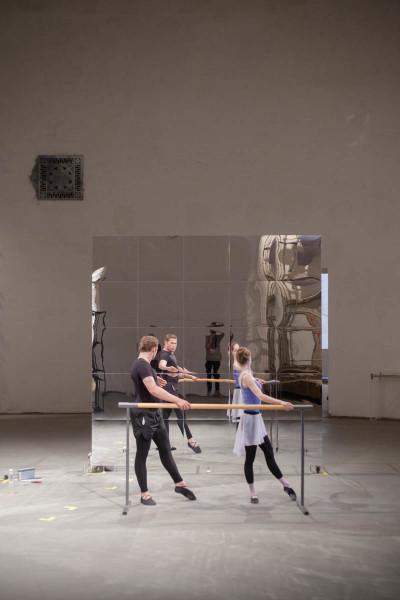
Leon Kahane
Photo: Ivan Erofeev Courtesy 6 Moscow Biennale of Contemporary Art
The curators decided to focus on what’s left when you remove all the excesses of a show that caters to an art market, and focus on the artists themselves.”Our one-liner was, we will engage with people,” de Baere added, noting that it’s not an exhibition about process, but about the place of art.
For ten days, the duration of this brief biennial, some 70 artists, economists, sociologists, and thinkers are meeting in Moscow to form a sort of dynamic think tank on the title “How to Gather? Acting in a Center in a City in the Heart of the Island of Eurasia.”
All of this takes place at the VDNKh, a massive park built in 1935 with different pavilions representing the various states of the USSR. In a way, it’s reminiscent of the Giardini in Venice, except that scale here is blown up to fit Soviet ambitions. And there’s an amusement park on the premises, too.
The main pavilion, where the biennial is held, is dedicated to space travel, with a statue of Lenin installed before the entrance and a row of street lamps shaped like wheat stalks leading to it. “In a certain way, the VDNKh is a symbolic representation of a society oriented towards the future—something that at this point in time we lack” said de Baere. “We’re imprisoned in one version of the present. The question of how to gather is not some naive utopia: Whatever the differences, whatever the past horrors, how can we still gather? Perhaps even as enemies, but in a way that is respectful and viable,” he told artnet News.
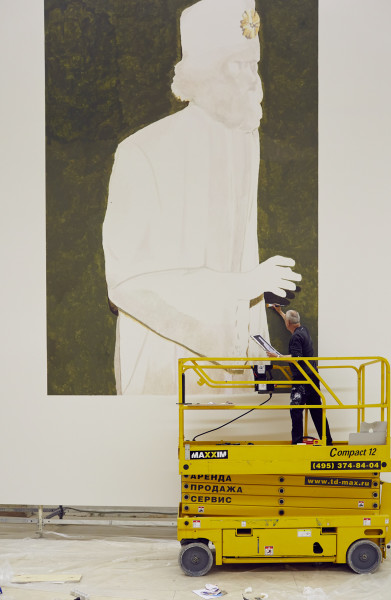
Luc Tuymans The Worshipper ( 2015)
Photo: Courtesy 6 Moscow Biennale of Contemporary Art
Visitors can drop in on artist Leon Kahane who takes a ballet class in the pavilion every day at 2pm. Much of what’s going on is a play on high and low-brow, and ballet is a quintessentially Russian art form that visitors can easily relate to. A performance work by Taus Makhacheva similarly explores the cross between culture and entertainment, with acrobats performing balancing acts with Social Realist paintings by Caucasian artists several times a day. (It’s perhaps the most Instagrammed work in the show).
There are also some works on view that have been produced beforehand: four photographs by Isa Genzken, Almagul Menlibayeva, Anne-Mie van Kerhoven, and Flaka Haliti flank the round central area of the pavilion, where performances take place. There’s also a massive painting by Luc Tuymans that was produced on site. The Belgian artist arrived a week before the opening to paint The Worshipper, a work so big that it will have to be destroyed when the biennial ends, as it doesn’t fit through any of the pavilion’s already over-scaled doors.
Otherwise, viewers will encounter artists working on site. Fabrice Hyber sits inside a wooden construction and paints portraits of visitors in crude oil. Qiu Zhijie is operating a large crane which he uses to paint his massive mural, a map of Eurasia with all its cultural, economic, and political divides. Honoré δ’O is working on a sculpture based on the ten commandments. I dropped by on a Shabbat, so he was taking a day of rest from his ongoing project, and engaged with a performance instead.
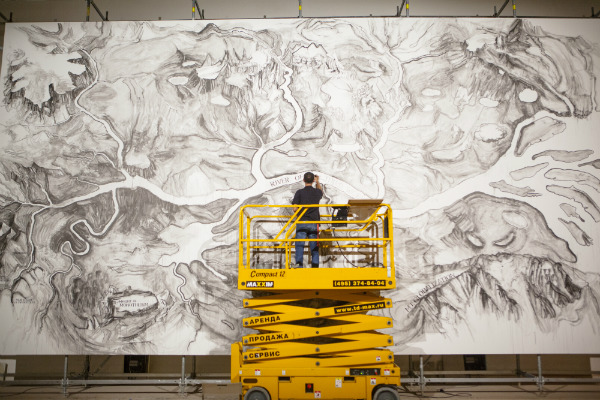
Qiu Zhijie
Photo: Nataliya Kogan Courtesy 6 Moscow Biennale of Contemporary Art
A central aspect of the question “how to gather” is how to find a common language and communicate. Several works deal directly with language and miscommunication, and Nicolaus Schafhausen is hosting a daily live talk show together with Chinese novelist Mian Mian. Addressing a new topic every day in English, like Love, Lifestyle, and so on, the talk is an unscripted performance of misunderstanding, in no small part caused by the speakers’ heavy accents (“What I love about you…” Schafhausen opens. “You laugh about me!?” Mian Mian interrupts in shock).
Offsetting the talk show’s approach to light entertainment are the series of talks, which opened last Tuesday with a keynote by sociologist Saskia Sassen. I listened to economist Mariana Mazzucato speak about her book The Entrepreneurial State: debunking public vs. private sector myths, which challenges the commonly used opposition of the regulating state versus the dynamic market. Mazzucato shows how some of the most high risk investments that led to innovations were sparked by public sector institutions. It’s time to rethink how we speak about political economy in the 21st century. Another keynote on the economy that is sure to draw an audience will be by former Greek minister of finance Yanis Varoufakis.

Taus Makhacheva
Photo: courtesy of 6 Moscow Biennale of Contemporary Art
Perched over laptops and editing equipment, people are working in the back of the pavilion. There’s a team producing a work by Saâdane Afif called Play Opposite which takes Alfred Jarry’s seminal play Ubu Roi and gives it a fresh translation into Russian. There’s a team filming, editing, and commenting on the talks and performances of the day. Nothing is live streamed, the focus is on experience, but there will be a feature documentary by Singaporean film director Ho Tzu Nyen, an e-book, and a documentary exhibition from October 3 to November 1, at the biennial’s site.
Behind a glass divide, there’s a team of art restorers working to conserve a dilapidated relief. It’s a Stalinist piece that commemorates the achievements of the people of Mother Russia, with their faces directed towards the sky, to space. The restorers are not a part of the biennale, but the curators have decided to let the conservation work continue while the biennale takes place. The message is as simple as it is ironclad: There’s no thinking about the future without recognizing the complexities of the past.
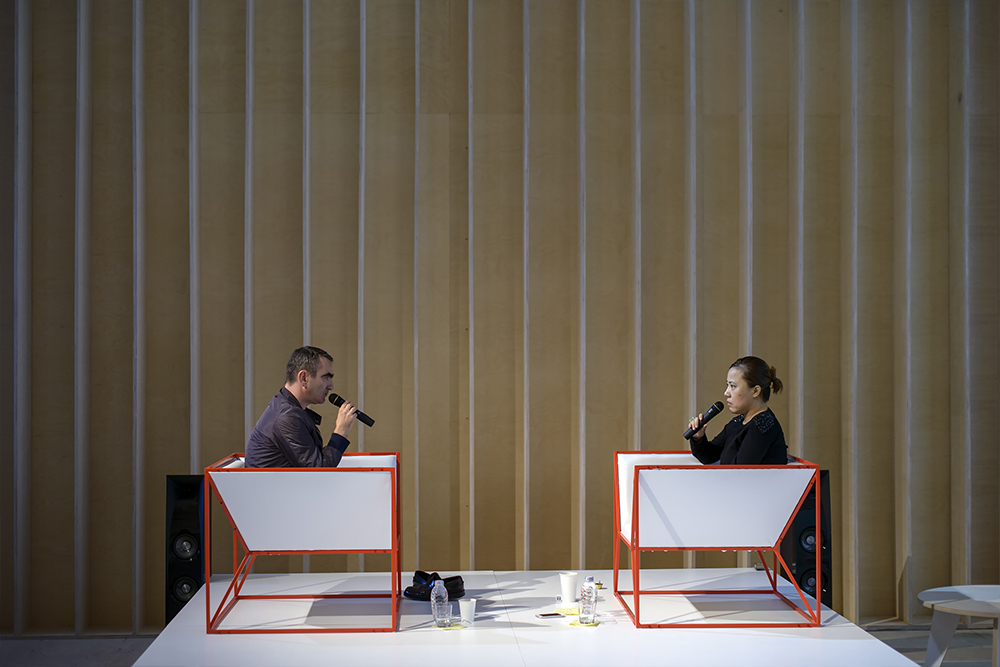
Nicolas Schafhausen and Mian Mian
Photo: Vladimir Chernyakhovsky
While the main event only runs until October 1, there are a host of concurrent shows on view in Moscow, that are included in the biennial’s program. Most prominently, Anish Kapoor’s first ever solo exhibition in Moscow at the Jewish Museum and Tolerance Center, and a splendid survey of Louise Bourgeois at the Garage Museum of Contemporary Art. Another exhibition, co-curated by Schafhausen and that will travel to Vienna, is being shown at the Austrian Cultural Forum in Moscow, under the title “Nadezhda—The Hope Principle.” Photographers were invited to document Russian industrial sites and the arresting results speak of the hopes about the future, held in the past, and confront them with today’s reality.
The 6th Moscow Biennale takes place from September 22 – October 1, 2015.